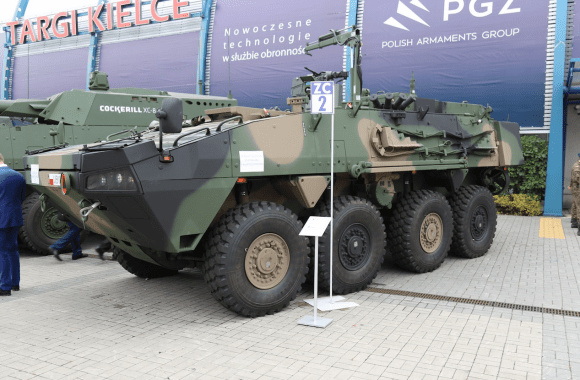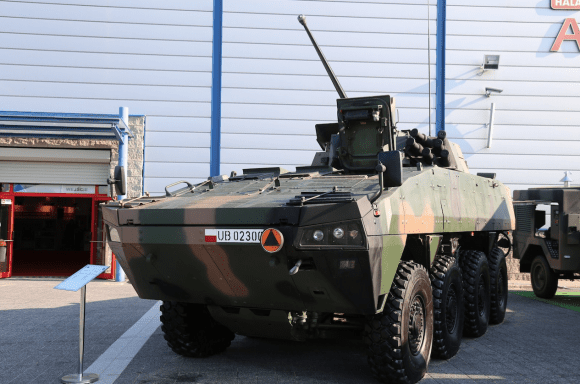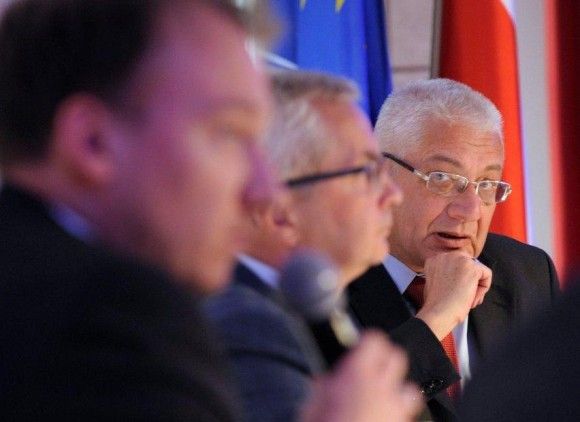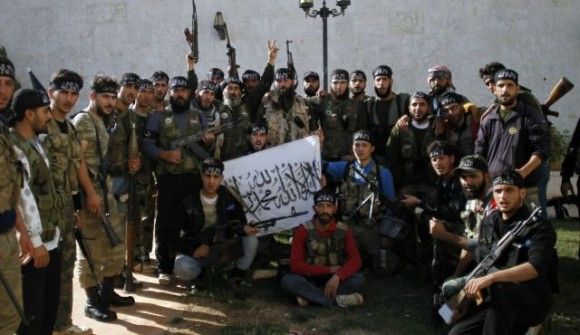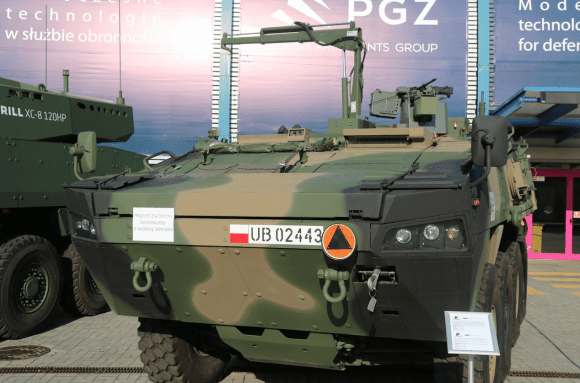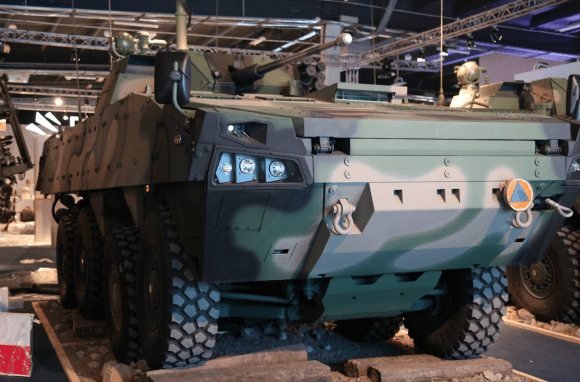Industry
Leopard 2PL Programme Showcased. Modernization Package For The Polish Main Battle Tanks.
The event, at which the agreements were signed by and between the Rheinmetall company and the Polish ZM Bumar-Labędy facility, regarding the modernization of the Leopard 2A4 vehicles, was also an occasion to present the configuration of the upgraded Polish Leopard 2PL main battle tanks. Division of work and assumptions regarding the changes of the basic systems were showcased. 128 tanks covered by the contract are expected to go through the upgrade process until the year 2020.
During the event of signing the EUR 130 million agreement, concerning the modernization, development of the prototypes and transfer of the competences between Rheinmetall and ZM Tarnów, representatives of both companies presented the key information regarding the scope of the planned modernization works.
The main areas in the modernization programme of the Leopard 2A4 tanks, the aim of which is to upgrade them to the Leopard 2PL standard shall include the following:
- Improving the ballistic resistance of the turret;
- Replacement of the hydraulic cannon stabilization mechanisms and the turret drives with their electric counterparts;
- Modernization of the targeting and observation systems used by the gunner and the commander;
- Increase of the firepower, allowing the crew to utilize new varieties and types of ammunition, meaning that the cannon will also have to be upgraded;
- General improvement of the crew’s safety;
- Installation of an auxiliary power unit.
Within the scope of the aforementioned modernization works, numerous components are going to be provided by the Polish industry. Rheinmetall will integrate these elements with the systems used by the company in the Leopard 2A4 modernization programme.
In 2017 Rheinmetall Landsysteme branch, acting as the integrator of the modernization programme, is going to deliver two Leopard 2PL prototypes which are going to be a subject of a detailed test programme. In 2018, 6 vehicles are going to be modified by the German Rheinmetall company, with the use of the Polish components. Another 12 examples of the tank will be modernized at the Bumar-Łabędy facility, with increased contribution of the Polish companies. Starting from the 18th example, the Poles are going to become the leading party of the works, until the moment when the 128th example is modernized – this is planned to happen in 2020. In 2021, an annex to the agreement is planned to be signed – and the remaining 14 tanks used by the Polish Army will undergo the modernization process.
READ MORE: Leopard 2PL – Polish Industry’s Contribution To The Modernization Programme
The modernization programme will involve numerous entities, belonging both to domestic, as well as to the foreign industries. Polska Grupa Zbrojeniowa [Polish Armament Group] will be represented by: Wojskowe Zakłady Motoryzacyjne [Military Automotive Works] in Poznan, dealing with the overhauls of the drive and suspension systems; PCO S.A. [Industrial Optics Centre], providing the KLW-1 Asteria cameras for the targeting system and KDN-1 Nyks night-vision device for the driver; Rosomak S.A., delivering the additional turret armour, licensed by IBD; ZM Tarnów, providing the components for electric turret and cannon drives; and the Gliwice-based OBRUM company, dealing with modernization regarding the simulators and the training devices.
On behalf of the Germans, Rheinmetall Landsysteme company acts as the integrator of the whole upgrade. The company collaborates with the associate companies, including: Rheinmetall Waffe Munition, dealing with modernization of the cannon and supplying the DM11 and DM63 ammunition; Rheinmetall Defence Electronics, carrying out the modernization of the EMES 15 and SKO targeting systems; and IBD Deisenroth Engineering, providing the modular armour. Additionally, Airbus DS Optronics is going to modernize the PERI R-17 sight, while the Jenoptik Defence & Civil Systems ESW company is going to deliver the EWNA electric drives for the turret and the cannon.
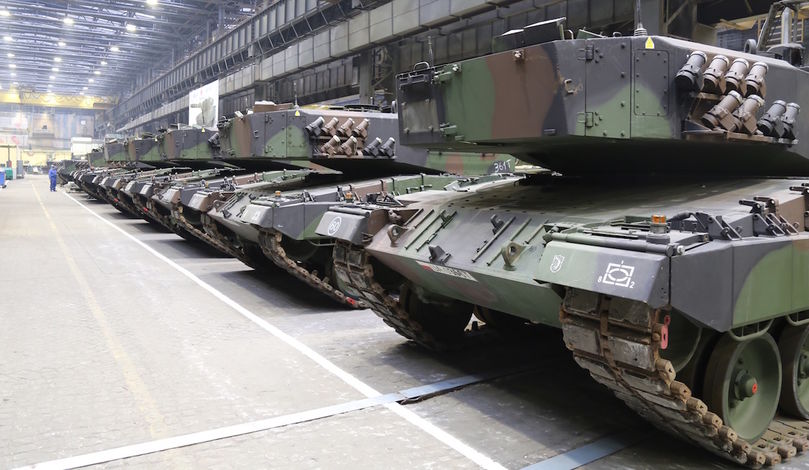
Scope of the Leopard 2A4 upgrade, up to the Leopard 2PL standard
When it comes to the detailed scope of modernization, it is going to cover, above all, the fire control system, and the armour and armament mounted within the turret. The core of the modernization programme is a compromise of three following factors:
- Cost;
- Vehicle weight;
- Improved capabilities, within the area determined by the aforementioned factors.
The main limitation imposed on the programme is related to the requirement, according to which vehicle weight of 60 tonnes shall not be exceeded, since such result would require, as the German experts claim, the whole suspension to be modified, so that it would be capable of properly supporting the increased increased mass of the tank. This means that within the 4 tonnes of weight increase, 75% of that mass is going to be used to improve the ballistic protection level for the turret. The remaining mass margin is going to be used for modernization of other key parameters of the tank.
In the light of the limitations described above, the companies resigned from improving the hull armour.
The turret is going to be retrofitted with additional modular IBD Deisenroth Engineering armour, placed in a way that would close the gap for the EMES-15 targeting device, however, without any changes made to the special armour insert, except for the gap above. The armour layout will still enable the driver to exit the vehicle, at any position of the turret. IDB is also going to deliver the spall liners. The works are planned to be realized in collaboration with the Polish Rosomak S.A. company. The assumption is that the Polish entity shall ultimately be able to license-manufacture the required elements of the armour.
Leopard tanks are additionally going to be fitted with a new Deugra fire/explosion protection system. According to the Rheinmetall company, in total, the resistance of the turret is going to be higher than in case of the Leopard 2A5 tank.
No plans have been made to improve strength of the bottom part of the hull. or to apply a new protective driver’s seat that would minimize the effects of the potential explosion under the vehicle. The hull of the Polish Leopard 2A4 tanks is not going to go through any significant changes. The modernization will include installation of a day-night observation system for the driver, along with the auxiliary power unit. The driver is to have a new day-night observation system at his disposal, featuring a KDN-1 Nyks reversing camera, manufactured by PCO.
The new, 17 kW APU will provide additional power for the newly installed systems. This is a change which is relevant in a situation, in which the hydraulic drive units for the turret and the cannon are replaced with the electric counterparts. In a longer run this increases the modernization potential, providing a power reserve that may be required for the prospective BMS system and other components, e.g. broadband communications features that are an indispensable element which should be implemented in case of the vehicles that operate in a net-centric battle awareness environment.
The remaining changes within the hull of the vehicle are related to modifications of other systems and to the general weight increase. The above requires replacement of the rescue equipment, including ropes and hooks that are used to recover the vehicles from the battlefield, since these elements are now to withstand load imposed by pulling a 60 tonnes tank.
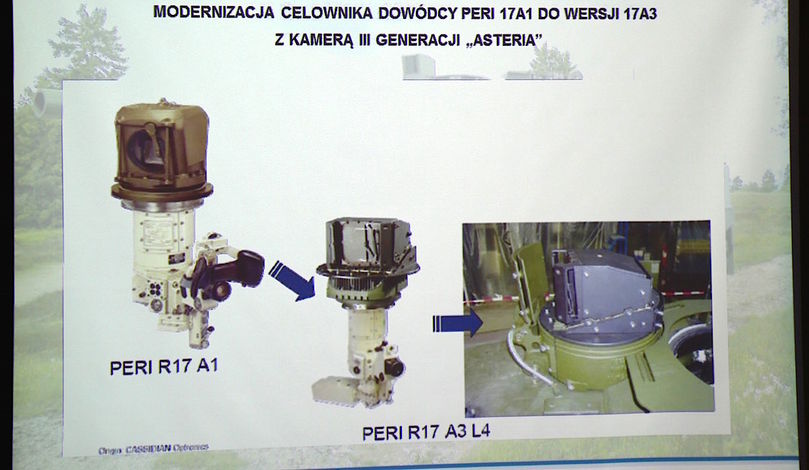
The key changes implemented in the Leopard 2PL tank include the fire control and observation systems, as well as the armament. The 120 mm tank cannon is going to be tailored to use the DM63A1 ammunition with a sabot round, and the DM11 high-explosive programmable round. Using the DM63A1 ammunition, in the light of the increased pressure and recoil, requires the recoil mechanism to be customized. Changes need to be made also to the casing container. In order to utilize the DM11 ammunition, L-44 programming system is going to be added. This module will be interconnected with the tank’s fire control system. The cannon will also feature an electronic trigger.
Fire control system is going to be modified, particularly within the scope of the applied optronic observation and targeting devices. EMES-15 gunner’s sight and PERI R-17 commander’s sight are expected to be replaced with the Polish KLW-1 Asteria Gen-III thermal vision cameras, provided by the PCO company. Moreover, PERI R17A1 system used in case of the Leopard 2A4 tanks will be modified by the Airbus DS Optronics company, so that it is compliant with the R17A3 standard. The above means that the system would be fitted with a laser range finder. Identical optoelectronic solution is being used in the latest variety of the Leopard tanks, the 2A7 version. Commander’s station will be fitted with a multifunction-display, allowing the user to transmit the video from the PERI R-17A3 and EMES-15 targeting devices, carry out a full test of the turret systems, and controlling their operation, and operation of the protection systems.
The turret and cannon motors will be replaced with the electric EWNA system provided by the Jenoptik Defence & Civil Systems ESW company. Elements of this device are going to be manufactured by the ZM Tarnów facility in Poland. All of the devices listed above will be coupled by a serial CAN-BUS communications bus, interconnecting all of the digital components of the tank.
The modernization programme does not include installation of the BMS system on the Leopard tanks. No plans have been made regarding the communications devices used so far, or within the scope of expanding the current system with a broadband digital link. The issues described in the present paragraph are, most probably, going to be covered by an annex to the agreement which may be signed, once the Armament Inspectorate of the Ministry of Defence selects the final BMS system that would be acquired for the land forces.
Regardless of the modernization process itself, introduction of the Leopard 2PL tanks into service will cause a necessity to change the methodology within which the tanks are operated and supported, and within which the crews are being trained. As the Polish companies would gain more experience within the scope of overhauls and maintenance of the modernized tanks, steps should be made to prepare the required spare parts inventory, start (economically) production of the consumables, or define independent and customized requirements, regarding the potential prospective modernization of the tanks in the future.
A question arises, as to to what degree the modernization assumptions for the Leopard 2A4 vehicles could be implemented in case of the Leopard 2A5 variant in the future. Not only is the above issue significant in the light of potential modernization, but also when it comes to spares and consumables and unification of those elements which has a significant impact on reducing the cost and making the maintenance easier.
Representatives of the Bumar company announced that the modernization process regarding the ASPT and AGPT simulators is to be carried out within the framework of a separate agreement, assuming that the simulators will be modified in a way which will let them replicate the work environment and capabilities possessed by the Leopard 2PL tank. This will delay the simulators modernization, as there will be no need to integrate the above systems and the newly acquired driver simulators into a single, joint suite.
In the future, it would be preferred to deepen the collaboration between PGZ and Rheinmetall in the fields such as development and manufacturing of the new sabot rounds, development and modification of the fire control systems, data processing suites or the programmable ammunition. Not only would the above steps create tangible results in the programmes related to further modernization of the tanks, but also within the scope of the initiatives the aim of which is to create a new infantry fighting vehicle or armoured personnel carriers.
Juliusz Sabak, Marek Dąbrowski

